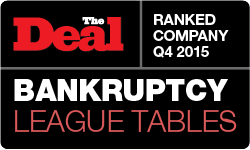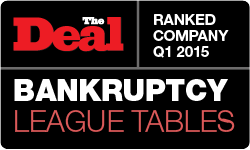Litigation costs money.
Litigation finance can provide the cash a plaintiff needs to prevail in court. Plaintiffs holding valid—and potentially quite valuable—claims sometimes do not have the resources to initiate a lawsuit or to see one through to a favorable resolution. Rules of professional ethics generally prohibit lawyers from providing clients with financial assistance. A contingency fee arrangement with a lawyer can help reduce a plaintiff’s out-of-pocket legal costs, but such arrangements are not always feasible. Even when they are, the lawyer may not have enough cash available to fully fund the costs of litigation.
Litigation financing (also known as professional funding, settlement funding, third-party funding, or legal funding) is the process by which plaintiffs can finance their litigation or other legal costs through a third party. This third party provides a nonrecourse cash advance to the plaintiff in exchange for a percentage share of the judgment or settlement. Litigation finance is used to fund all types of cases, including commercial litigation, intellectual property disputes, personal injury cases, class actions, whistleblower suits, and even high-profile divorce cases. And funders invest in early stage cases, cases pending appeal, and even finished cases.
Many investors, including big banks, participate in this sector. There are also firms dedicated solely to investment in litigations. These firms now invest about $1 billion a year, and the industry seems to be growing. Topping $1 Billion Mark, Big Litigation Funder Gets Bigger, Julie Triedman, The Am Law Daily, January 6, 2016. The industry’s largest investor, Chicago-based Gerchen Keller, was formed in 2013 with $100 million in capital and now has more than $1.4 billion in assets under management. In many ways, the firm operates like a typical hedge fund. It maintains several separate funds that invest private capital in portfolios of assets selected by the firms’ managers. The major difference between it and more traditional hedge funds is that Gerchen Keller invests only in this new asset class—namely, interests in lawsuits. In addition to investments by big banks and funds, accredited investors with as little as $2,500 to invest can get a piece of the action. Specifically, LexShares, a crowdsourcing website, matches third-party funders meeting certain qualifications with litigants in need of funding.
The foregoing demonstrates that lawsuit investment is a new and burgeoning asset class. In spite of this, there is no uniform regulation. Congress and state legislatures are looking to change this situation.
READ MORE →



 The Deal has once again recognized Orrick as a Top Ten Bankruptcy Law Firm in its
The Deal has once again recognized Orrick as a Top Ten Bankruptcy Law Firm in its  Once again, Orrick has been ranked a Top Ten Bankruptcy Law Firm by The Deal Pipeline. These rankings are released on a quarterly basis, compiling comprehensive deal intelligence to identify the leading law, crisis management, investment, and non-investment firms and professionals involved in bankruptcy transactions throughout the United States. After cracking the top ten in Q1, Orrick remained among the top ten bankruptcy law firms in every quarter in 2015.
Once again, Orrick has been ranked a Top Ten Bankruptcy Law Firm by The Deal Pipeline. These rankings are released on a quarterly basis, compiling comprehensive deal intelligence to identify the leading law, crisis management, investment, and non-investment firms and professionals involved in bankruptcy transactions throughout the United States. After cracking the top ten in Q1, Orrick remained among the top ten bankruptcy law firms in every quarter in 2015.